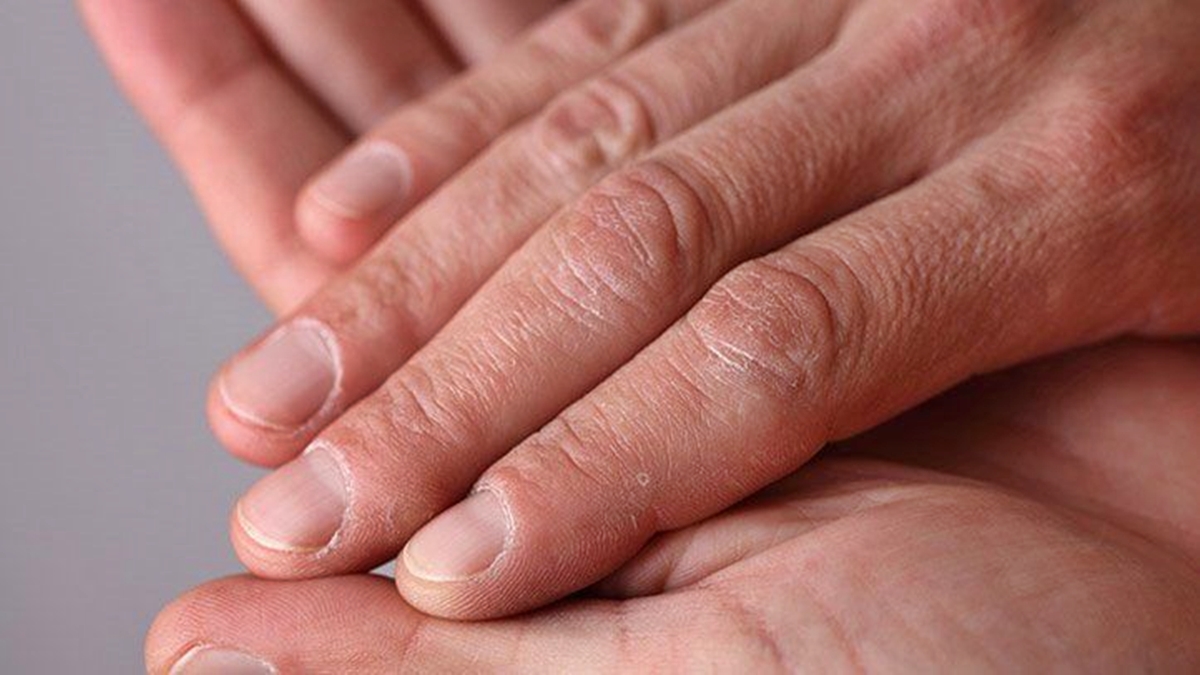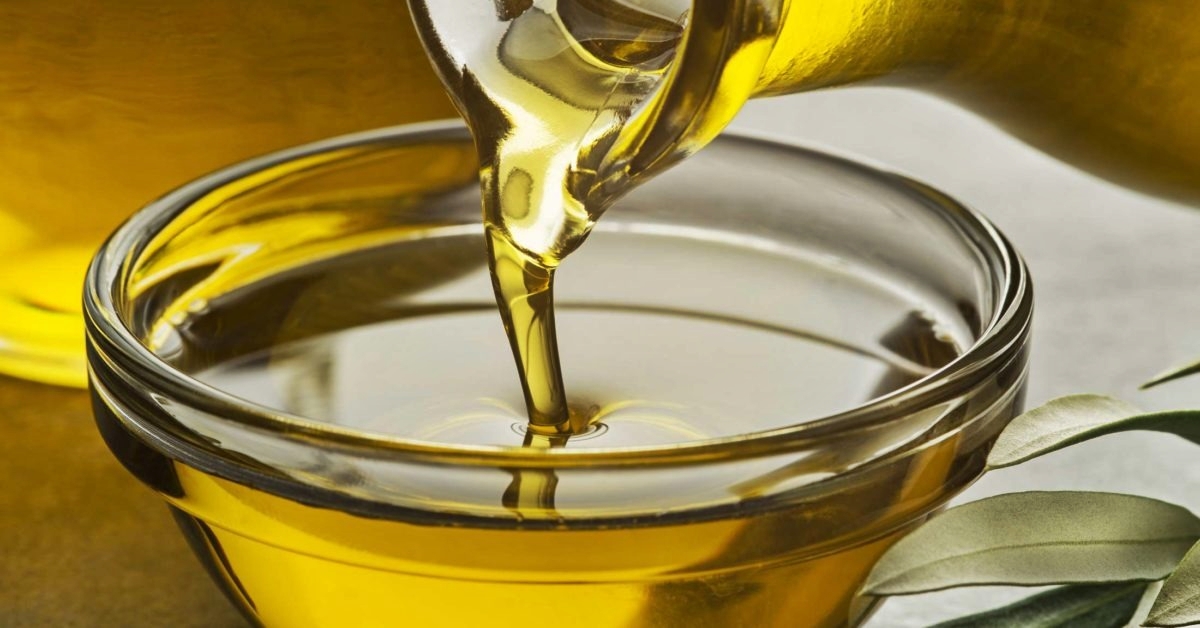

Featured
What Do Your Nails Say About Your Health
Published: August 12, 2023
Discover how your nails can provide valuable clues about your overall health. Read our featured article to learn more about the signs to watch out for.
Introduction
Our nails are more than just a canvas for the latest nail art trend or a means to show off a fresh manicure. They can actually serve as indicators of our overall health. By examining the condition and appearance of our nails, we can gain valuable insights into our well-being.
From the color to the texture, our nails can reflect a wide range of health-related issues. Whether we notice pale or white nails, yellow discoloration, or even specific indentations and lines, these changes can be a red flag for underlying health conditions. Therefore, it’s important to pay attention to any changes we may observe in our nails and seek medical advice if necessary.
In this article, we will explore various nail abnormalities and what they might indicate about our health. It’s worth noting that while some nail changes are harmless and may be a result of external factors like nail trauma or aging, others may be symptoms of more serious underlying conditions.
So, let’s dive into the world of nail health and discover what our nails can reveal about our well-being.
Pale or White Nails
If you notice that your nails have turned pale or have a white appearance, it could indicate an underlying health issue. One possible cause is anemia, which is a condition characterized by a deficiency of red blood cells or hemoglobin. When you have anemia, reduced blood flow to the nail bed can lead to pale or white nails.
Another potential cause of pale or white nails is liver disease. Liver conditions such as hepatitis or cirrhosis can impact the production of proteins and decrease blood flow to the nail bed, resulting in a paler nail color.
In some cases, pale or white nails may be a sign of malnutrition. A deficiency in important nutrients like iron, protein, or vitamin B12 can affect the health of your nails and lead to a paler appearance.
If you have recently noticed paleness in your nails, it is important to consider if you have experienced any other symptoms such as fatigue, weakness, or shortness of breath. If so, it is advisable to consult a healthcare professional for a proper diagnosis and appropriate treatment.
Yellow Nails
Yellow nails can be a result of several different factors, ranging from harmless causes to underlying health conditions. One common cause of yellow nails is nail fungus, also known as onychomycosis. Fungal infections can cause the nails to become discolored, thickened, and brittle.
Another cause of yellow nails is smoking. The chemicals in cigarettes can stain the nails, resulting in a yellowish tint. This discoloration may take time to fade even after quitting smoking.
In some cases, yellow nails may be a sign of a more serious underlying condition, such as psoriasis or thyroid disease. Psoriasis can affect the nails, causing them to become thick, yellow, and pitted. Similarly, certain thyroid conditions can cause changes in nail color and texture.
It’s important to note that wearing dark-colored nail polish for an extended period without proper ventilation can also lead to yellowing of the nails. This is known as “nail staining” and can be resolved by giving your nails a break from polish and allowing them to breathe.
If you have persistent yellow discoloration of your nails without an obvious cause, it is recommended to consult a dermatologist or healthcare provider to determine the underlying cause and appropriate treatment options.
Blue Nails
While most people associate blue nails with cold temperatures or poor circulation, persistent blue discoloration of the nails, known as cyanosis, can indicate an underlying health issue.
One common cause of blue nails is a lack of oxygen in the blood, called hypoxia, which can be a sign of respiratory or cardiovascular problems. Conditions like chronic obstructive pulmonary disease (COPD), asthma, or congenital heart defects can affect the oxygenation of the blood and result in blue nails.
Raynaud’s disease is another potential cause of blue nails. This condition causes the blood vessels in the fingers and toes to narrow, restricting blood flow and leading to discoloration.
In some cases, blue nails can be a symptom of a condition called methemoglobinemia, which is a blood disorder that affects the oxygen-carrying capacity of hemoglobin. This can be caused by exposure to certain medications or chemicals.
It is important to note that temporary blue discoloration of the nails can occur due to cold temperatures or when the hands or feet are exposed to extreme conditions. However, if you experience persistent blue nails or have accompanying symptoms like shortness of breath or chest pain, it is crucial to seek medical attention to determine the underlying cause and appropriate treatment.
Spoon-shaped Nails
Spoon-shaped nails, also known as koilonychia, are characterized by nails that have a concave shape, resembling a spoon. While it may seem unusual, this condition can provide important insights into your health.
Spoon-shaped nails are commonly associated with iron deficiency anemia, a condition characterized by low levels of iron in the body. Iron is essential for the production of hemoglobin, the protein responsible for carrying oxygen in the blood. When iron levels are inadequate, it can affect the growth and structure of the nails, leading to koilonychia.
In addition to iron deficiency anemia, spoon-shaped nails can also be caused by other factors such as exposure to chemicals or trauma to the nail bed. Furthermore, certain underlying health conditions like hemochromatosis, an inherited disorder that causes excess iron absorption, or hypothyroidism, an underactive thyroid, can also contribute to the development of spoon-shaped nails.
If you notice that your nails are concave and spoon-shaped, it is important to consult a healthcare professional to determine the underlying cause. A simple blood test can help assess your iron levels and identify any deficiencies or other potential health concerns. Treatment for spoon-shaped nails typically involves addressing the underlying cause, such as iron supplementation for iron deficiency anemia.
Clubbing
Clubbing refers to the enlargement and rounding of the fingertips and nails. This condition is characterized by the nails becoming soft and the angle between the nail and cuticle increasing. Although clubbing can be hereditary, it can also be a sign of an underlying health issue.
One possible cause of clubbing is respiratory or lung disorders. Conditions like chronic obstructive pulmonary disease (COPD), lung cancer, or cystic fibrosis can lead to reduced oxygen levels in the blood, resulting in clubbing of the nails.
Heart conditions, such as congenital heart disease or endocarditis, can also be associated with clubbing. In these cases, decreased blood flow to the fingertips and nails can lead to the development of clubbed nails.
Liver diseases, including cirrhosis or liver cancer, can contribute to clubbing. These conditions can affect the circulation and blood flow, leading to changes in the shape and appearance of the nails.
In some cases, clubbing can be a sign of inflammatory bowel disease (IBD), such as Crohn’s disease or ulcerative colitis. These conditions can cause chronic inflammation throughout the body, including the nails.
If you notice clubbing of your nails, it is important to consult a healthcare professional for further evaluation. They can assess your medical history, conduct tests, and diagnose the underlying cause of the clubbing. Treatment will primarily focus on addressing the underlying health condition contributing to the clubbing.
Brittle or Splitting Nails
Brittle or splitting nails can be a frustrating and common problem that many people face. While it may seem like a minor concern, this condition can be indicative of underlying health issues or external factors.
One common cause of brittle or splitting nails is dryness and lack of moisture. Exposure to harsh chemicals, excessive hand washing, and frequent use of nail polish remover can strip the nails of their natural oils, leading to dry and brittle nails.
Inadequate nutrition can also contribute to brittle nails. A deficiency in essential nutrients such as biotin, iron, or vitamin E can cause the nails to become weak and prone to splitting.
Medical conditions such as hypothyroidism or peripheral artery disease can affect the blood circulation to the nails, leading to brittle or splitting nails. Diabetes and fungal infections can also contribute to nail weakness and vulnerability.
In some cases, brittle nails may be a sign of aging. As we grow older, our nails naturally become drier and more prone to breakage.
To improve the health and strength of brittle or splitting nails, it is important to take proper care of them. This includes keeping the nails well moisturized, avoiding excessive use of chemicals and harsh nail products, and practicing good nail hygiene.
If you are concerned about your brittle or splitting nails, it is advisable to consult a dermatologist or healthcare professional. They can assess your overall health and determine if any underlying conditions need to be addressed. Additionally, they may recommend specific treatments or supplements to improve the health and appearance of your nails.
Pitting or Dented Nails
Pitting or dents on the surface of the nails can be a visible sign of an underlying health condition. These small depressions or indentations are often referred to as “nail pitting”.
One of the most common causes of nail pitting is psoriasis, a chronic autoimmune condition that affects the skin and nails. Psoriasis can cause rapid cell turnover and inflammation, leading to the development of small pits or depressions on the surface of the nails.
Another possible cause of nail pitting is a condition called alopecia areata. This autoimmune disorder primarily affects the hair follicles, but it can also affect the nails, resulting in pitting.
In some cases, nail pitting may be associated with connective tissue disorders, such as rheumatoid arthritis or systemic lupus erythematosus. These conditions can have an impact on the structures that support nail growth, leading to pitting or dents.
It’s important to note that nail trauma and fungal infections can also cause indentations or pitting on the nails. However, these causes are usually temporary and do not require specific medical treatment.
If you notice pitting or dents on your nails that are not a result of trauma or an infection, it is recommended to consult a dermatologist or healthcare professional. They can evaluate your nails, perform any necessary tests, and determine the underlying cause of the pitting. Treatment options will depend on the identified condition and may include topical or systemic medications to manage the underlying issue and improve the appearance of the nails.
Beau’s Lines
Beau’s lines are horizontal depressions or ridges that span across the width of the nail. They are named after the French physician Joseph Honoré Simon Beau, who first described them. These lines can provide valuable insights into your health when present on your nails.
One common cause of Beau’s lines is an interruption in nail growth. This can occur as a result of acute illness, high fever, or severe physical or emotional stress. The body’s focus shifts away from nail growth during these periods, causing temporary disruptions in the nail matrix.
In some cases, Beau’s lines may be a sign of chronic systemic conditions or long-term damage to the nail matrix. Conditions such as diabetes, malnutrition, peripheral vascular disease, or chemotherapy can interfere with nail growth and lead to the formation of Beau’s lines.
Beau’s lines can also be caused by trauma to the nails, such as forcefully hitting or squeezing the nail bed. Certain medications or exposure to toxins can also result in the development of these lines.
It’s important to note that the depth and width of Beau’s lines can provide an approximate indication of when the disruption to nail growth occurred. The closer the line is to the nail bed, the more recent the event or condition that caused the interruption.
If you notice Beau’s lines on your nails, it is advisable to consult a healthcare professional or dermatologist for further evaluation. They can help determine the underlying cause of the lines and address any potential health concerns.
Nail Ridges
Nail ridges refer to vertical lines or ridges that run from the cuticle to the tip of the nail. While nail ridges are a common occurrence and often a normal part of the aging process, they can sometimes indicate underlying health conditions.
As we age, nail ridges can naturally develop and become more pronounced. These ridges are typically harmless and do not require medical intervention. However, it’s important to note any sudden or significant changes in your nail ridges, as they could be a sign of an underlying issue.
In some cases, nail ridges can be a result of nutrient deficiencies or inadequate nutrition. Insufficient intake of vitamins, minerals, or protein can impact the growth and health of the nails, leading to the development of ridges. Additionally, conditions such as anemia or thyroid dysfunction can also contribute to nail ridges.
Furthermore, certain skin conditions, such as eczema or psoriasis, can affect the nails and cause ridges to form. Poor circulation or chronic diseases like diabetes or autoimmune disorders may also contribute to the development of ridges.
It’s important to differentiate between vertical and horizontal ridges on the nails. Vertical ridges are generally considered benign and a normal part of aging. However, horizontal ridges, also known as Beau’s lines, are more concerning and can indicate acute illness or trauma to the body.
If you notice persistent, deep, or worsening ridges on your nails, it is advisable to consult a healthcare professional or dermatologist. They can evaluate your nails and conduct any necessary tests to determine the underlying cause. Addressing any underlying health conditions or improving nutrition can help improve the appearance of your nails and overall nail health.
Red or Dark Lines or Spots
Finding red or dark lines or spots on your nails can be a cause for concern, as they may indicate underlying health conditions that require attention. While some cases may be harmless, it is important to understand the potential causes and seek medical advice if you notice these changes on your nails.
One common cause of red or dark lines or spots is nail trauma. Minor injuries to the nail bed, such as accidentally hitting your finger or stubbing your toe, can result in blood vessels bursting. This can lead to the appearance of red or dark lines or spots underneath the nail.
However, it is crucial to rule out more serious causes, such as melanoma or other forms of skin cancer. In some cases, red or dark lines or spots on the nails can be a sign of malignant melanoma, especially when there are other associated factors like changes in the shape, size, or border of the spot, or if the spot extends beyond the nail. If you notice any of these concerning signs, it is vital to promptly consult a healthcare professional for proper evaluation and diagnosis.
Another potential cause of red or dark lines or spots is nail fungus, medically known as onychomycosis. Fungal infections can result in discoloration of the nails, including the appearance of red or dark lines or spots. This condition often requires medical treatment to eliminate the fungal infection and restore the health of the nails.
In some cases, underlying health conditions like psoriasis, lupus, or vasculitis can lead to the development of red or dark lines or spots on the nails. These conditions can affect the blood vessels and cause changes in nail color and appearance.
If you notice red or dark lines or spots on your nails, it is important to have them evaluated by a healthcare professional or dermatologist. They can assess the characteristics of the lines or spots and conduct any necessary tests to determine the cause. Prompt diagnosis and appropriate treatment can help address any underlying health concerns and preserve the health and appearance of your nails.
Nail Separation
Nail separation, also known as onycholysis, is a condition where the nail plate separates from the nail bed. This can be a concerning issue that may indicate an underlying health problem or external factors.
One of the common causes of nail separation is trauma or injury to the nail. Forceful impact, repetitive pressure, or improper nail techniques like excessive filing can cause the nail to separate from the underlying bed. It’s important to take proper care when handling your nails to avoid any damage.
Infections such as fungal infections can also lead to nail separation. Fungal infections can cause the nail to become discolored, thickened, and brittle, leading to separation from the nail bed.
Other potential causes of nail separation include psoriasis, a chronic autoimmune condition that affects the skin and nails, and thyroid disorders that can impact nail growth and health.
In some cases, nail separation can be a sign of underlying health concerns like anemia, certain autoimmune diseases, or malnutrition. It’s important to note any accompanying symptoms such as fatigue, hair loss, or changes in weight that may suggest an underlying condition.
If you experience nail separation, it is recommended to consult a healthcare professional or dermatologist. They can assess your nails, take a thorough medical history, and perform any necessary tests to determine the cause of the separation. Treatment options will depend on the underlying cause and may include antifungal medications, topical treatments, or addressing any underlying health conditions.
It is also important to avoid picking or pulling at the separated nail, as this can worsen the condition and increase the risk of infection. Keeping the nails clean and dry, using proper nail care techniques, and protecting the nails from trauma can help prevent nail separation in the future.
Conclusion
Our nails are not just decorative features, but they also provide valuable insights into our overall health. Changes in nail color, texture, shape, or appearance can serve as potential indicators of underlying health issues or external factors.
From pale or white nails to yellow nails, blue nails, spoon-shaped nails, clubbing, brittle or splitting nails, pitting or dented nails, Beau’s lines, nail ridges, red or dark lines or spots, and nail separation, each abnormality carries its own significance.
If you notice any concerning changes in your nails, it is essential to consult a healthcare professional or dermatologist for a proper evaluation and diagnosis. They can help determine the underlying cause and provide appropriate treatment options if necessary. Early detection and intervention can often lead to better outcomes and prevent potential complications.
Additionally, practicing good nail care and maintaining overall health through proper nutrition, hydration, and stress management can contribute to maintaining healthy nails. Avoiding excessive use of chemicals, protecting the nails from trauma, and maintaining good hygiene are also essential for maintaining the health and appearance of your nails.
Remember, while these nail abnormalities can provide important insights into your health, it’s important not to jump to conclusions or panic. Many times, these changes can be harmless or easily treatable. However, it’s always better to be safe than sorry and seek professional advice for any persisting or concerning issues with your nails.
Pay attention to your nails, listen to what they may be telling you, and prioritize your overall health and well-being. Your nails can be key indicators that can help you take proactive steps towards better health.









